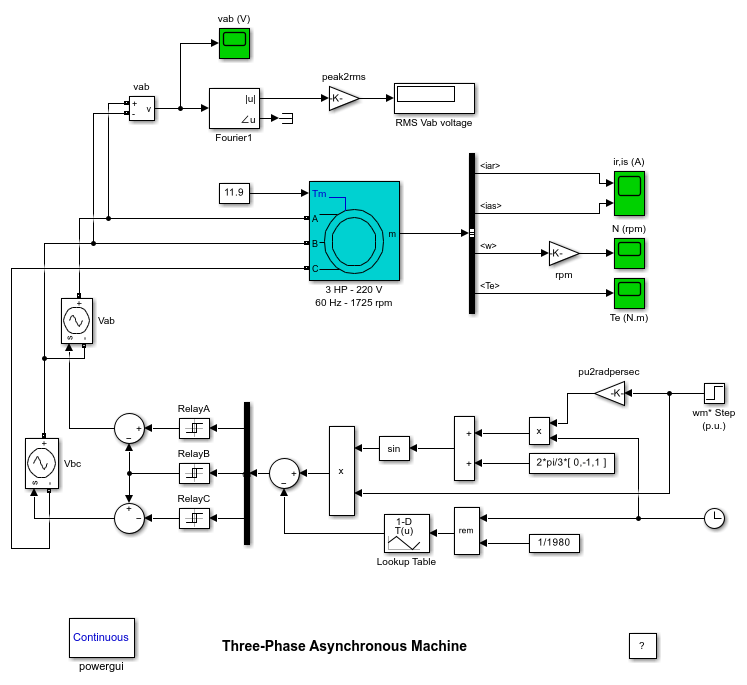Three-Phase Asynchronous Machine
This example shows the asynchronous machine in an open-loop speed control on a 3 HP 220 V industrial motor.
Louis-A. Dessaint and R. Champagne (Ecole de Technologie Superieure, Montreal)

Description
A three-phase motor rated 3 HP, 220 V, 1725 rpm is fed by a sinusoidal PWM inverter. The base frequency of the sinusoidal reference wave is 60 Hz while the triangular carrier wave's frequency is set to 1980 Hz. The PWM inverter is built entirely with standard Simulink® blocks. Its output goes through Controlled Voltage Source blocks before being applied to the Asynchronous Machine block's stator windings. The machine's rotor is short-circuited. Its stator leakage inductance Lls is set to twice its actual value to simulate the effect of a smoothing reactor placed between the inverter and the machine. The load torque applied to the machine's shaft is constant and set to its nominal value of 11.9 N.m.
The motor is started from stall. The speed setpoint is set to 1.0 pu, or 1725 rpm. This speed is reached after 0.9 s.
Simulation
Take a look at the simulation parameters. The Maximum time step has been limited to 10 microseconds. This is required due to the relatively high switching frequency (1980 Hz) of the inverter.
Observe that the rotor and stator currents are quite noisy despite the use of a smoothing reactor. The noise introduced by the PWM inverter is also observed in the electromagnetic torque waveform Te. However, the motor's inertia prevents this noise from appearing in the motor's speed waveform.
The RMS value of the fundamental component of the line voltage at the machine's stator terminals is measured with a Fourier block.
Finally, observe the PWM inverter's output. Use the zoom on the vab oscilloscope to zoom in on the waveform.